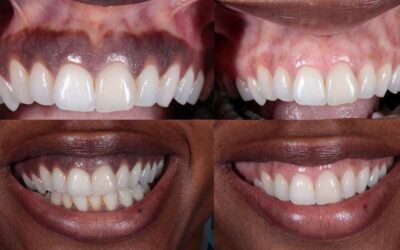Crown Lengthening Will Make You Smile
Find Your Smile with Crown Lengthening
Smiling is the universal form of communication. You smile at someone and almost instinctively they’ll smile back. It’s a way to say hello or tell someone to have a nice day. But, what if you don’t like your smile? What if, for example, your gums are covering a portion of your teeth, giving you a “gummy smile”? If this is the case, you may not like your smile or even want to smile. According to the American Academy of Periodontology, that’s where crown lengthening can help.
What is Crown Lengthening?
Performed by a periodontist, functional and aesthetic crown lengthening are surgical procedures used to treat excessive gum tissue. The procedure can be complete for aesthetic and functional purposes, to correct a “gummy” smile, or to prepare the gums for permanent restorations such as crowns or bridges.
A gummy smile causes your teeth to appear too short. Although your teeth are most likely the right size, your gums are covering them. Aesthetic crown lengthening will removes excessive gum tissue and in some cases the underlying bone around the tooth to expose more of your natural teeth. Crown lengthening can be done only to one tooth, if that’s all that’s necessary. It can also be done to even your gum line. As a result, crown lengthening gives you a natural, broad smile.
Functional crown lengthening is performed to prepare teeth and gums in restorative dental cases. For example, if you have a tooth that’s decayed, broken below the gumline or completely missing, and are in need of single or multiple dental implants, where a permanent crown or bride will be put into place, a functional crown lengthening procedure may be necessary.
Preparing for a Crown Lengthening
To prepare for your crown lengthening, your periodontist will meet with you to go over your medical history and to review your x-rays. At this appointment, be sure to tell them all of the medications you’re taking. They’ll tell you if you need to discontinue any of them before the procedure. Aspirin usage, for example, will probably need to be discontinued so that your blood isn’t too thin for the surgery.
What to Expect During a Crown Lengthening
A crown lengthening is an outpatient procedure. Local anesthesia will be applied and some people receive a sedative. Once that’s done, your periodontist will cut the gums to expose the teeth and bones. For some people, only the soft gum tissue needs to be removed. Then, your surgeon will wash the area with salt water before suturing.
Ten Tips to Recover:
- Take OTC or prescription medication
- Use an ice pack
- For the first 24 hours avoid hot foods
- Leave dressings in for 7-14 days
- Carefully brush teeth
- Wear your stent or denture
- Eat a soft food diet
- Don’t drink alcohol
- Don’t smoke
- Don’t prod the area
After the Surgery
After your crown lengthening, which is a simple procedure, you’ll be able to enjoy your smile once again. Dr. Aalam and Dr. Krivitsky are experienced and skilled periodontists who provide the best in class, treatment and technology to ensure their patients receive excellent care. As with any type of surgery, it is important to be on the lookout for infection post procedure. However, as long as you follow the tips for recovery, you shouldn’t have any complications.
You May Also Like...
The Benefits of Gum Depigmentation
A bright, beautiful smile is often associated with self-confidence and a positive self-image. However, this can be a...
Gums Contouring and Reshaping: What is it?
Your teeth aren’t the only thing people notice about your smile. The tissues around them are just as important. But...
What Combination of Cosmetic Periodontal Treatments is Right for You?
Cosmetic periodontal surgery is a type of treatment used to maintain or improve aesthetics while preserving or...



